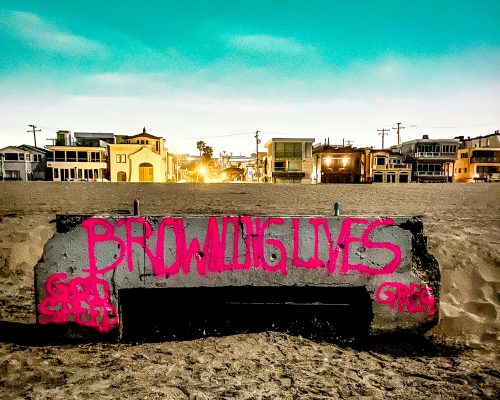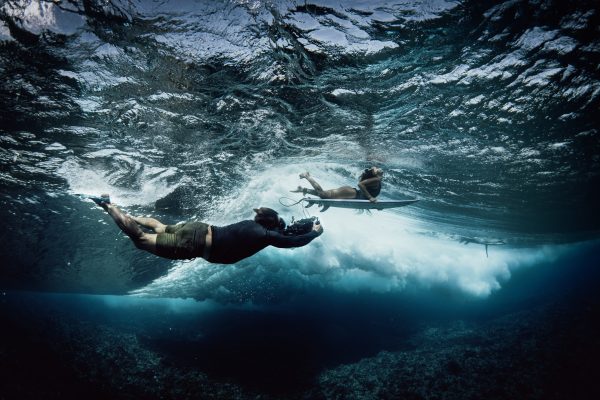no images were found
State grant funds Hermosa Police DUI crackdown
by Kevin Cody
Drivers departing downtown Hermosa Beach Friday night, February 1, encountered a delay, some longer than others.
Approximately a dozen Hermosa Beach Police Officers, plus officers from Manhattan Beach, Redondo Beach and Inglewood, conducted a DUI checkpoint on Pier Avenue that night, midway along the six-block stretch between the downtown bars and restaurants, and Pacific Coast Highway.
The operation included six officers who stopped and questioned drivers, a chase officer on a motorcycle who deterred drivers from fleeing, officers who parked cars of drivers suspected of being impaired, officers trained to conduct SFSTs (Standard Field Sobriety Tests), and one DRE officer (Drug Recognition Expert) from the Manhattan Beach Police Department.
Hermosa Community Services Officers lit the DUI checkpoint like a nighttime movie set with what resembled eight-foot tall Luci lights, inflated by portable generators.
“This is the first time in 10 years, Hermosa has had a DUI checkpoint,” said Detective Garrett McDermott, who coordinated the operation. Garrett also secured the $80,000 California Office of Traffic Safety grant that funded the checkpoint, and will fund a second DUI checkpoint later in the year. The grant also helped fund “saturation patrols” over the past two months that have resulted in 26 DUI arrests in Hermosa.
“The holiday season, and going all the way to the Super Bowl is when we see the most DUIs,” Hermosa Police Chief Paul LeBaron reported to the City Council at its January 28 meeting.
Detective McDermott had another explanation for the stepped up DUI enforcement. “We’re fully staffed and there’s a lot of energy pumping through the department,” he said.
McDermott joined Hermosa Police in 2009, after moving to California to get away from the cold in Vermont, where he was a Deputy Sheriff. He chose the South Bay because of fond memories of summer vacations with his grandparents, who lived in Manhattan Beach.
Garrett described the DUI checkpoint as highly synchronized.
The six line officers looked at drivers’ licenses, and asked the drivers where they’d been, where they were going, and if they had been drinking. They also asked the drivers if they had medical conditions or were taking prescription drugs that might impair their driving.
Drivers were then asked to follow the officer’s index finger, as the officer moved it side to side, and up and down.
Drivers whose eyes jumped around moving side to side, a condition known as nystagmus, were asked to step out of the car. Drivers whose eyes showed redness when they looked up and down were also asked to step out, as were drivers without licenses or whose licenses were suspended.
Their cars were driven to a police station parking lot, and they were walked to a yard behind the police station. The station is on Pier Avenue, a few hundred feet from the checkpoint.
At the station they were met by a team of officers trained in administering SFSTs (Standard Field Sobriety Tests), led by Officer Marcos Juarez.
First, drivers were given the Romberg balancing test, Juarez explained. They were told to stand with their feet together, close their eyes and tilt their heads back for 30 seconds.
Next, they were asked to take nine steps forward, toe to heel, with their hands at their sides. In addition to balance and coordination, the two tests show if the drivers can follow directions, Juarez said.
The Preliminary Alcohol Screening (PAS), or breathalyzer test, is voluntary. But an unwillingness to take the test does suggest the driver has been drinking, Juarez acknowledged.
Drivers who barely pass the test, might be asked to return to the police station for their cars the next day.
By the end of the evening, nine drivers, or 2% of the 457 drivers stopped at the Pier Avenue DUI checkpoint were arrested for driving under the influence. Another 10 were cited for suspended or no licenses, and 12 cars were impounded. No drivers were arrested for drug impairment.
“Those nine drivers arrested for DUIs represent nine potential fatalities,” McDermott said.
Another reason for satisfaction with Friday’s DUI checkpoint is its evidence that DUI enforcement in Hermosa is having a deterrent effect.
By comparison to the 2% of drivers arrested at the Hermosa checkpoint for driving under the influence, 8% of weekend evening drivers nationally have Blood Alcohol Concentrations (BAC) over the legal limit, according to the Arizona State University Center for Problem-Oriented Policing.
The prize for best driver response to being asked about drinking that night was a woman who told Officer Dalton Blumenfield, “I’m pregnant.” ER









